A Novel Islanding Detection Technique for a Resilient Photovoltaic-Based Distributed Power Generation System Using a Tunable-Q Wavelet Transform and an Artificial Neural Network
Abstract
1. Introduction
- TQWT signal processing technique is used to extract features from all available detector signals for islanding detection.
- Threshold selection through the ANN model, which is based on conjugate gradient algorithms to classify islanding from other grid-disturbance.
2. Configuration of Photovoltaic-Based Distributed Power Generation System
3. Tunable Q-Factor Wavelet Transform and ANN-Based Islanding Detection Technique
- In the first islanding case (i.e., C1), 80 tests were done with signals having different loads that match with distributed power generation.
- In the second islanding case (i.e., C2), the simulation is done considering 120 tests having signals with different loads greater or lesser than distributed generators.
- The third case (i.e., C3) with induction motor starting has variations from 5 HP to 215 HP power.
- The fourth (i.e., C4) is also a non-islanding one that mainly focuses on and discusses the capacitive switching.
- The fifth case (i.e., C5) enumerates the switching of various loads.
- The sixth non-islanding case (i.e., C6) is simulated with various faults like the single line to ground fault, double line to ground fault, a line-to-line fault case.
3.1. Feature Extraction
3.2. ANN Classifier for Islanding and the Non-Islanding States
4. Results and Discussion
4.1. Performance Metrics
4.2. The Output of the Training Methodology under Ideal and Noisy Condition
5. Conclusions
Author Contributions
Funding
Conflicts of Interest
List of Nomenclature
| Standard deviation | |
| Energy | |
| Maximum value | |
| Minimum value | |
| Range | |
| Direct axis voltage | |
| Quadrature axis voltage | |
| Decomposition coefficient | |
| Log energy entropy | |
| Mean value | |
| ANFIS | Adaptive neuro-fuzzy inference system |
| ANN | Artificial neural network |
| AWGN | Additive White Gaussian noise |
| C1 | Different loads that match with DG |
| C2 | Different loads that are larger/ Lesser then the DG |
| C3 | Changing the loads |
| C4 | Capacitor switching |
| C5 | Switching the electric motor |
| C6 | Fault events |
| DG | Distributed generation |
| DG | Distributed generation |
| GPV | Grid-connected photovoltaic device |
| HAS | Harmony search algorithm |
| HHT | Hilbert-Huang Transform |
| HPF | High pass filter |
| HSF | High pass scalable component |
| IGBT | Insulated gate bipolar transistor |
| j | Decomposition stage number |
| LPF | Low-Pass Filter |
| LSF | Low pass scalable component |
| MPPT | Maximum power point tracking |
| MSLT | Modified transformation slantlet |
| PCC | Point of common coupling |
| PLCC | Power line carrier communication |
| PV | Photovoltaic |
| PWM | Pulse width modulation |
| Q | Q-factor |
| R | Redundancy |
| ROCOF | Rate of change of frequency |
| ROCOV | Rate of change of voltage |
| RPNN | Ridge-based Probabilistic Neural Network |
| SLT | Slantlet Transform |
| SNR | Signal to noise ratio |
| SW4 | Capacitor bank |
| TQWT | Tunable Q-factor wavelet transform |
| VSC | DC-link voltage |
References
- IRENA. Renewable Capacity Statistics 2019; International Renewable Energy Agency (IRENA): Abu Dhabi, UAE, 2019; Available online: https://irena.org/publications/2019/Mar/Renewable-Capacity-Statistics-2019 (accessed on 28 June 2020).
- IRENA. Renewable Capacity Statistics 2020; International Renewable Energy Agency (IRENA): Abu Dhabi, UAE, 2020; Available online: https://irena.org/publications/2020/Mar/Renewable-Capacity-Statistics-2020 (accessed on 28 June 2020).
- Kumar, N.M.; Chopra, S.S.; Chand, A.A.; Elavarasan, R.M.; Shafiullah, G.M. Hybrid renewable energy microgrid for a residential community: A techno-economic and environmental perspective in the context of the SDG7. Sustainability 2020, 12, 3944. [Google Scholar] [CrossRef]
- Ahl, A.; Yarime, M.; Goto, M.; Chopra, S.S.; Kumar, N.M.; Tanakã, K.; Sagawa, D. Exploring blockchain for the energy transition: Opportunities and challenges based on a case study in Japan. Renew. Sustain. Energy Rev. 2020, 117, 109488. [Google Scholar] [CrossRef]
- Pepermans, G.; Driesen, J.; Haeseldonckx, D.; Belmans, R.; D’haeseleer, W. Distributed generation: Definition, benefits and issues. Energy Policy 2005, 33, 787–798. [Google Scholar] [CrossRef]
- Shrestha, A.; Kattel, R.; Dachhepatic, M.; Mali, B.; Thapa, R.; Singh, A.; Bista, D.; Adhikary, B.; Papadakis, A.; Maskey, R.K. Comparative study of different approaches for islanding detection of distributed generation systems. Appl. Syst. Innov. 2019, 2, 25. [Google Scholar] [CrossRef]
- Chopra, S.S.; Khanna, V. Toward a network perspective for understanding resilience and sustainability in industrial symbiotic networks. In Proceedings of the 2012 IEEE International Symposium on Sustainable Systems and Technology (ISSST), Boston, MA, USA, 16–18 May 2012; pp. 1–6. [Google Scholar]
- Chopra, S.S.; Khanna, V. Understanding resilience in industrial symbiosis networks: Insights from network analysis. J. Environ. Manag. 2014, 141, 86–94. [Google Scholar] [CrossRef] [PubMed]
- Chopra, S.S.; Khanna, V. Interconnectedness and interdependencies of critical infrastructures in the US economy: Implications for resilience. Phys. A Stat. Mech. Appl. 2015, 436, 865–877. [Google Scholar] [CrossRef]
- Chopra, S.S.; Dillon, T.; Bilec, M.; Khanna, V. A network-based framework for assessing infrastructure resilience: A case study of the London metro system. J. R. Soc. Interface 2016, 13, 20160113. [Google Scholar] [CrossRef]
- Power Systems Engineering Center (PSERC). Engineering Resilient Cyber Physical Systems; Power Systems Engineering Center (PSERC): Tempe, AZ, USA, 2011. [Google Scholar]
- Rosales-Asensio, E.; de Simón-Martín, M.; Borge-Diez, D.; Blanes-Peiró, J.J.; Colmenar-Santos, A. Microgrids with energy storage systems as a means to increase power resilience: An application to office buildings. Energy 2019, 172, 1005–1015. [Google Scholar] [CrossRef]
- Linkov, I.; Bridges, T.; Creutzig, F.; Decker, J.; Fox-Lent, C.; Kröger, W.; Lambert, J.H.; Levermann, A.; Montreuil, B.; Nathwani, J.; et al. Changing the resilience paradigm. Nat. Clim. Chang. 2014, 4, 407–409. [Google Scholar] [CrossRef]
- Linkov, I.; Trump, B.D.; Keisler, J. Risk and resilience must be independently managed. Nature 2018, 555, 30. [Google Scholar] [CrossRef]
- Manoj Kumar, N.; Ghosh, A.; Chopra, S.S. Power Resilience Enhancement of a Residential Electricity User Using Photovoltaics and a Battery Energy Storage System Under Uncertainty Conditions. Energies 2020, 13, 4193. [Google Scholar] [CrossRef]
- IEEE Std 1547. Standard for Interconnecting Distributed Resources with Electric Power Systems; IEEE Press: Piscataway, NJ, USA, 2003. [Google Scholar]
- DeBlasio, R.; Basso, T. Standardization on DER. In Proceedings of the First International Conference on the Integration of Renewable Energy Sources and Distributed Energy Resources, Brussels, Belgium, 1–3 December 2004; pp. 236–243. [Google Scholar]
- Balaguer-Alvarez, I.J.; Ortiz-Rivera, E.I. Survey of distributed generation islanding detection methods. Rev. IEEE Am. Lat. Trans. 2010, 8, 565–570. [Google Scholar] [CrossRef]
- Yin, J.; Chang, L.; Diduch, C. Recent developments in islanding detection for distributed power generation. In Proceedings of the Large Engineering Systems Conference on Power Engineering (LESCOPE-04), Halifax, NS, Canada, 28–30 July 2004; pp. 124–128. [Google Scholar]
- Xu, W.; Zhang, G.; Li, C.; Wang, W.; Wang, G.; Kliber, J. A power line signaling based technique for anti-islanding protection of distributed generators; Part I: Scheme and analysis. IEEE Trans. Power Deliv. 2007, 22, 1758–1766. [Google Scholar] [CrossRef]
- Barsali, S.; Ceraolo, M.; Pelacchi, P.; Poli, D. Control techniques of dispersed generators to improve the continuity of electricity supply. IEEE Power Eng. Soc. 2002, 2, 789–794. [Google Scholar]
- Zamani, R.; Hamedani-Golshan, M.E.; Haes Alhelou, H.; Siano, P.; Pota, H.R. Islanding detection of synchronous distributed generator based on the active and reactive power control loops. Energies 2018, 11, 2819. [Google Scholar] [CrossRef]
- Chowdhury, S.P.; Chowdhury, S.; Crossley, P.A. Islanding protection of active distribution networks with renewable distributed generators: A comprehensive survey. Electr. Power Syst. Res. 2009, 79, 984–992. [Google Scholar] [CrossRef]
- Menon, V.; Nehrir, M.H. A hybrid islanding detection technique using voltage unbalance and frequency set point. IEEE Trans. Power Syst. 2007, 22, 442–448. [Google Scholar] [CrossRef]
- Pigazo, A.; Liserre, M.; Mastromauro, R.A.; Moreno, V.M.; Dell’Aquila, A. Wavelet-based islanding detection in grid-connected PV systems. IEEE Trans. Ind. Electron. 2009, 56, 4445–4455. [Google Scholar] [CrossRef]
- Pinto, S.J.; Panda, G. Wavelet technique based islanding detection and improved repetitive current control for reliable operation of grid-connected PV systems. Int. J. Electr. Power Energy Syst. 2015, 67, 39–51. [Google Scholar] [CrossRef]
- Laghari, J.A.; Mokhlis, H.; Karimi, M.; Bakar, A.H.A.; Mohamad, H. Computational Intelligence based techniques for islanding detection of distributed generation in distribution network: A review. Energy Convers. Manag. 2014, 88, 139–152. [Google Scholar] [CrossRef]
- Vyas, S.; Kumar, R.; Kavasseri, R. Data analytics and computational methods for anti-islanding of renewable energy based distributed generators in power grids. Renew. Sustain. Energy Rev. 2017, 69, 493–502. [Google Scholar] [CrossRef]
- Heidari, M.; Seifossadat, G.; Razaz, M. Application of decision tree and discrete wavelet transform for an optimized intelligent-based islanding detection method in distributed systems with distributed generations. Renew. Sustain. Energy Rev. 2013, 27, 525–532. [Google Scholar] [CrossRef]
- Kong, X.; Xu, X.; Yan, Z.; Chen, S.; Yang, H.; Han, D. Deep learning hybrid method for islanding detection in distributed generation. Appl. Energy 2018, 210, 776–785. [Google Scholar] [CrossRef]
- Raza, S.; Mokhlis, H.; Arof, H.; Laghari, J.; Wang, L. Application of signal processing techniques for islanding detection of distributed generation in distribution network: A review. Energy Convers. Manag. 2015, 96, 613–624. [Google Scholar] [CrossRef]
- Shayeghi, H.; Sobhani, B. Zero NDZ assessment for anti-islanding protection using wavelet analysis and neuro-fuzzy system in inverter based distributed generation. Energy Convers. Manag. 2014, 79, 616–625. [Google Scholar] [CrossRef]
- Mishra, M.; Sahani, M.; Rout, P. An islanding detection algorithm for distributed generation based on Hilbert–Huang transform and extreme learning machine. Sustain. Energy Grids Netw. 2017, 9, 13–26. [Google Scholar] [CrossRef]
- Ahmadipour, M.; Hizam, H.; Lutfi Othman, M.; Amran Mohd Radzi, M. An Anti-Islanding Protection Technique Using a Wavelet Packet Transform and a Probabilistic Neural Network. Energies 2018, 11, 2701. [Google Scholar] [CrossRef]
- Ahmadipour, M.; Hashim, H.; Othman, M.L.; Mohd Radzi, M.A.; Chireh, N. A fast fault identification in a grid-connected photovoltaic system using wavelet multi-resolution singular spectrum entropy and support vector machine. Energies 2019, 12, 2508. [Google Scholar] [CrossRef]
- Ahmadipour, M.; Hizam, H.; Othman, M.L.; Radzi, M.A.M.; Murthy, A.S. Islanding detection technique using Slantlet Transform and Ridgelet Probabilistic Neural Network in grid-connected photovoltaic system. Appl. Energy 2018, 231, 645–659. [Google Scholar] [CrossRef]
- Kolli, A.T.; Ghaffarzadeh, N. A novel phaselet-based approach for islanding detection in inverter-based distributed generation systems. Electr. Power Syst. Res. 2020, 182, 106226. [Google Scholar] [CrossRef]
- Ahmadipour, M.; Hizam, H.; Othman, M.L.; Radzi, M.A.M.; Chireh, N. A novel islanding detection technique using modified Slantlet transform in multi-distributed generation. Int. J. Electr. Power Energy Syst. 2019, 112, 460–475. [Google Scholar] [CrossRef]
- Reddy, G.R.S.; Rao, R. Oscillatory-Plus-Transient Signal Decomposition using TQWT and MCA. J. Electron. Sci. Technol. 2019, 17, 135–151. [Google Scholar]
- Luo, J.; Yu, D.; Liang, M. A Kurtosis-guided adaptive demodulation technique for bearing fault detection based on tunable-Q wavelet transform. Meas. Sci. Technol. 2013, 24, 679–698. [Google Scholar] [CrossRef]
- Liu, J.; Zhang, C.; Zhu, Y.; Ristaniemi, T.; Parviainen, T.; Cong, F. Automated detection and localization system of myocardial infarction in single-beat ECG using Dual-Q TQWT and wavelet packet tensor decomposition. Comput. Methods Programs Biomed. 2020, 184, 105120. [Google Scholar] [CrossRef] [PubMed]
- Selesnick, I.W. Wavelet transform with tunable Q-factor. IEEE Trans. Signal Process. 2011, 59, 3560–3575. [Google Scholar] [CrossRef]
- Pachori, R.B.; Nishad, A. Cross-terms reduction in the Wigner-Ville distribution using tunable-Q wavelet transform. Signal Process. 2016, 120, 288–304. [Google Scholar] [CrossRef]
- Gupta, V.; Nishad, A.; Pachori, R.B. Focal EEG signal detection based on constant-bandwidth TQWT filter-banks. In Proceedings of the 2018 IEEE International Conference on Bioinformatics and Biomedicine (BIBM), Madrid, Spain, 3–6 December 2018. [Google Scholar]
- George, S.T.; Subathra, M.S.P.; Sairamya, N.J.; Susmitha, L.; Premkumar, M.J. Classification of epileptic EEG signals using PSO based artificial neural network and tunable-Q wavelet transform. Biocybern. Biomed. Eng. 2020, 40, 709–728. [Google Scholar] [CrossRef]
- Dominguez, E.C.; Dominguez, E.C.; Subathra, M.S.P.; Sairamya, N.J.; George, S.T. Detection of focal epilepsy in brain maps through a novel pattern recognition technique. Neural Comput. Appl. 2020, 32, 10143–10157. [Google Scholar] [CrossRef]
- Rumelhart, D.E.; Hinton, G.E.; Williams, R.J. Learning representations by back-propagating errors. In Neurocomputing: Foundations of Research; Anderson, J.A., Rosenfeld, E., Eds.; MIT Press: Cambridge, UK, 1988; pp. 696–699. [Google Scholar]
- Fausett, L. Fundamentals of Neural Networks—Architectures, Algorithms and Application; Prentice Hall Inc.: Englewood Cliffs, NJ, USA, 1994; p. 461. [Google Scholar]
- Malvoni, M.; Chaibi, Y. Machine Learning Based Approaches for Modeling the Output Power of Photovoltaic Array in Real Outdoor Conditions. Electronics 2020, 9, 315. [Google Scholar]








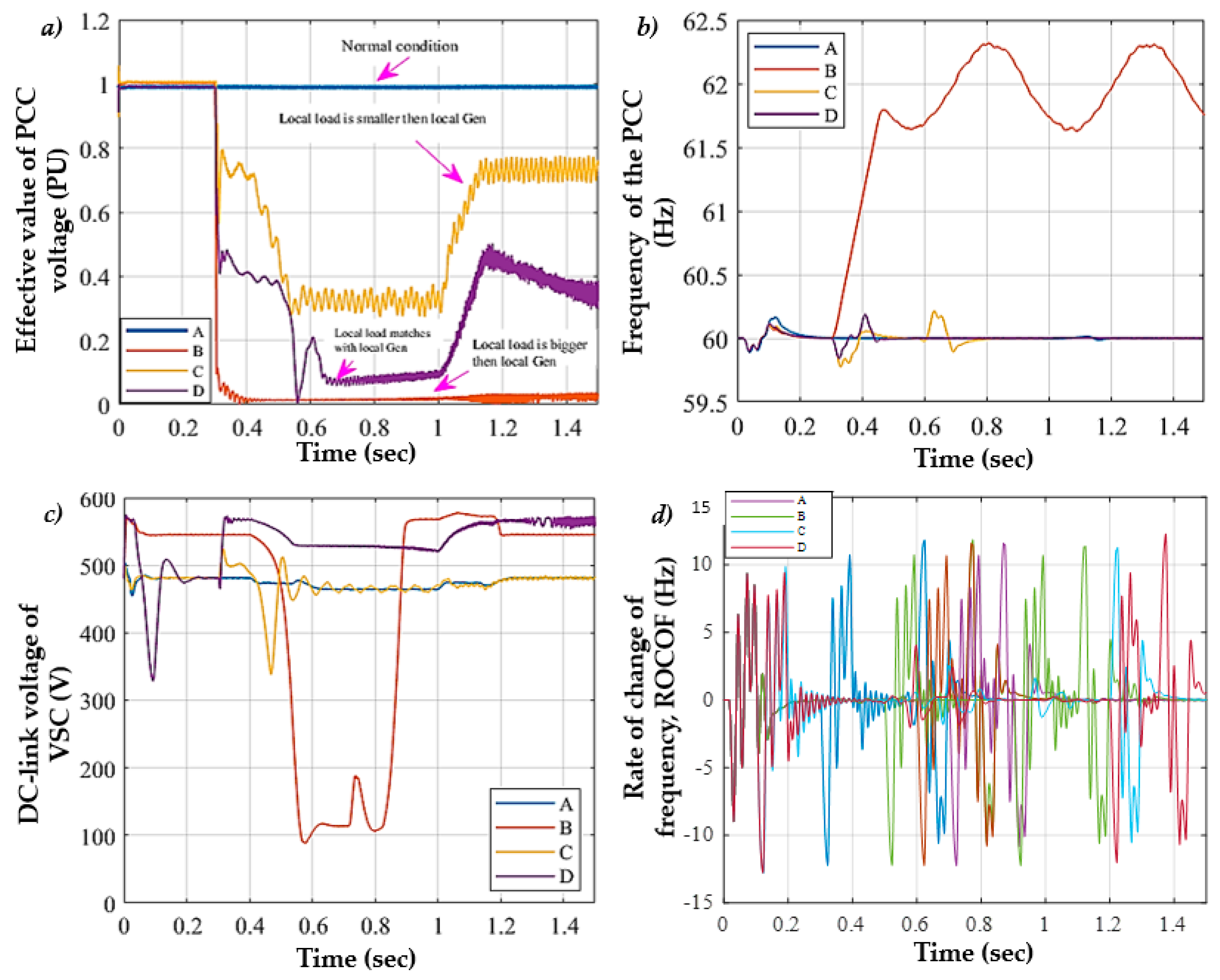
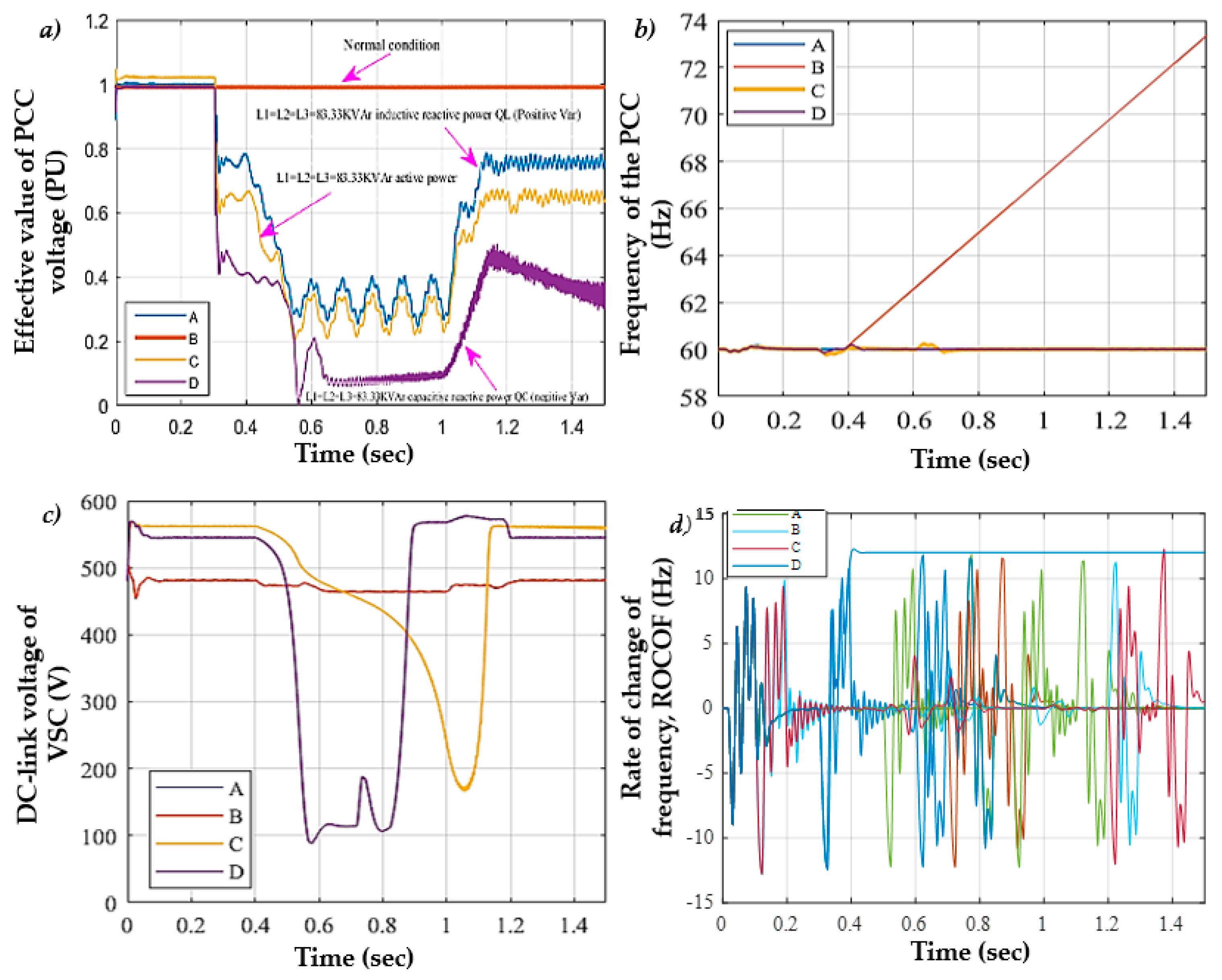

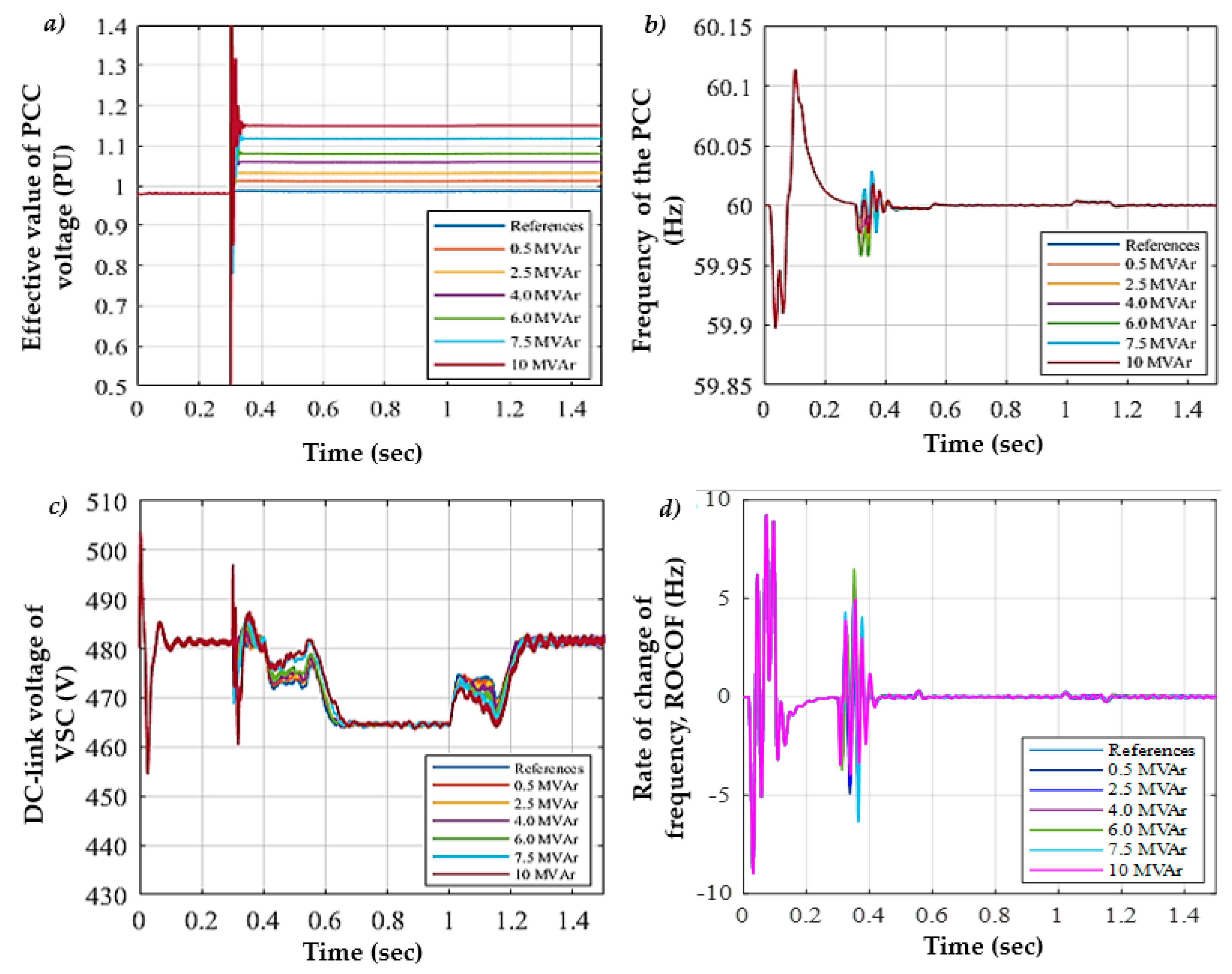
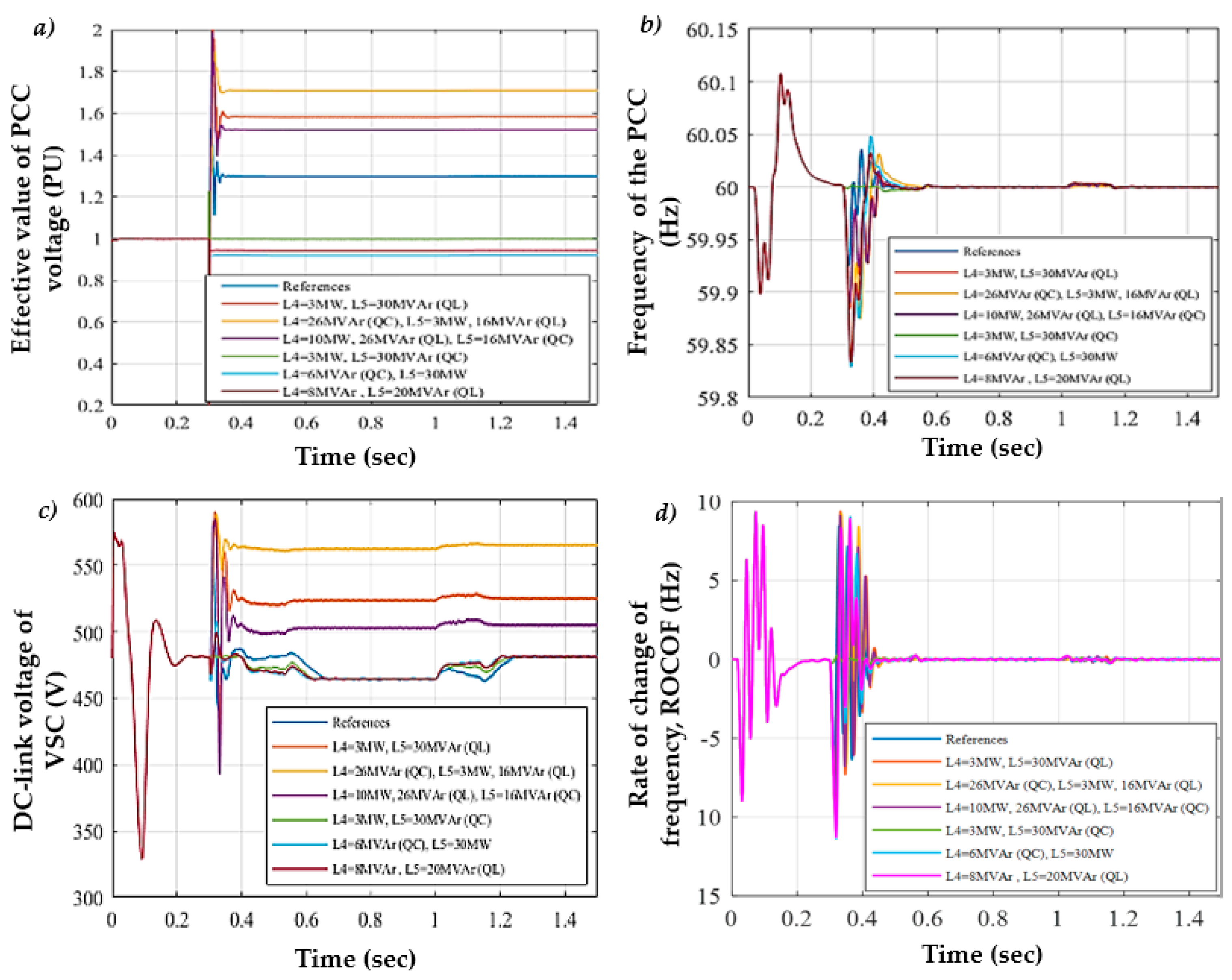

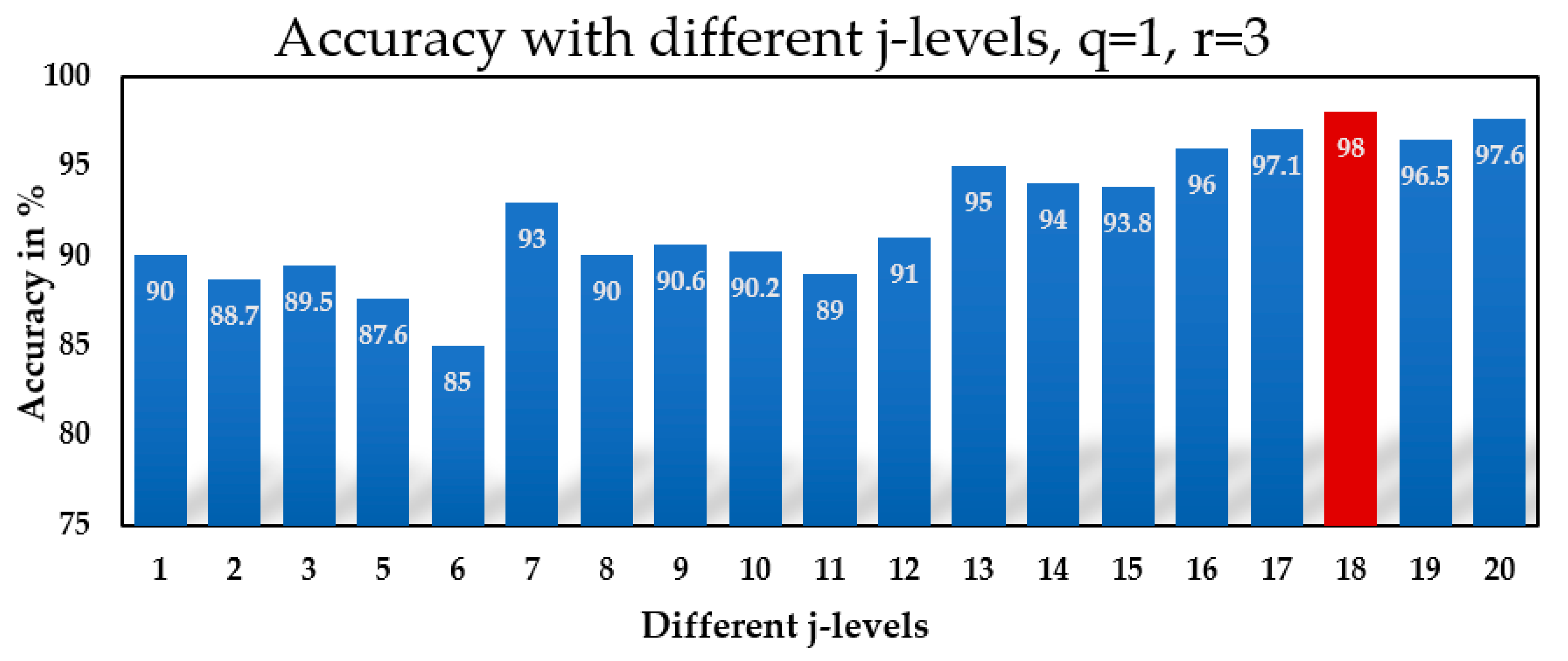
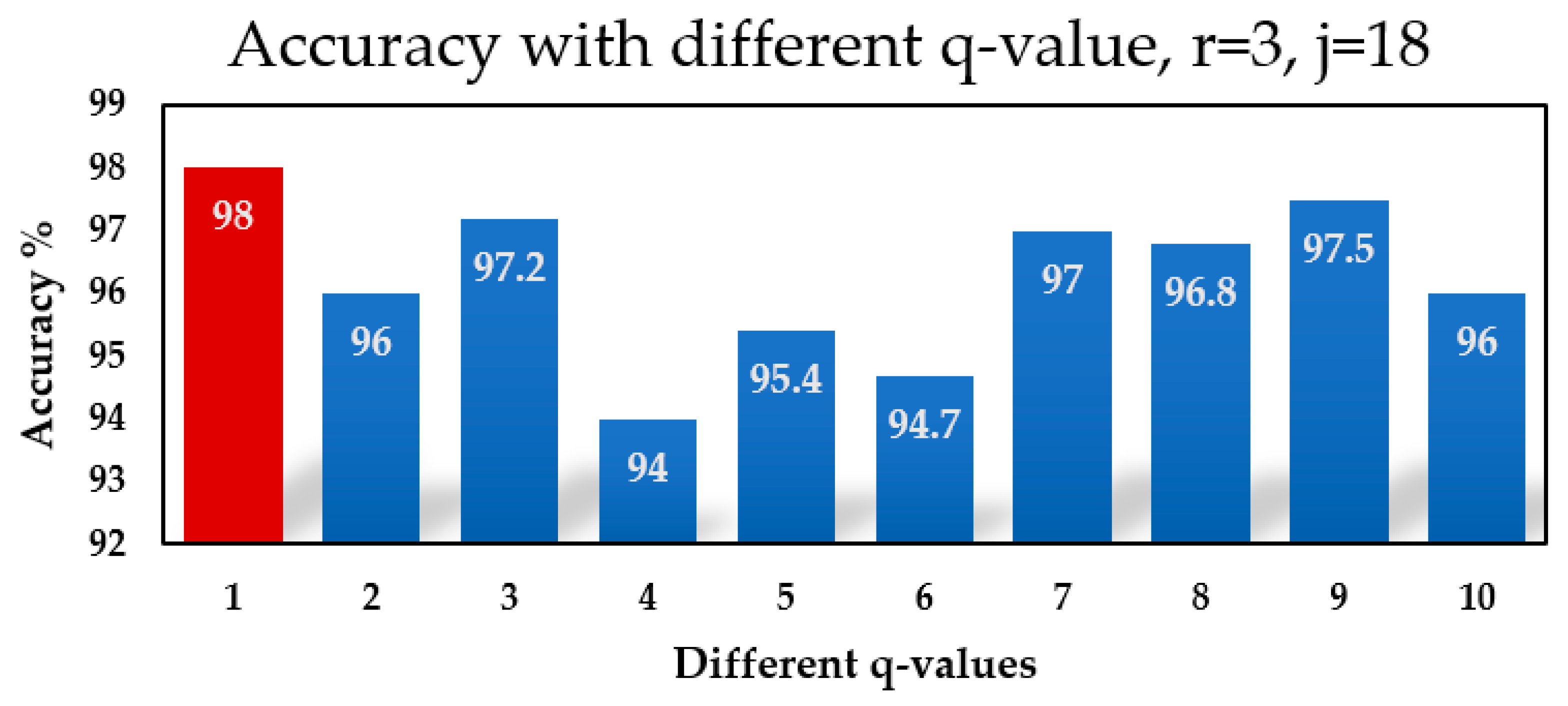
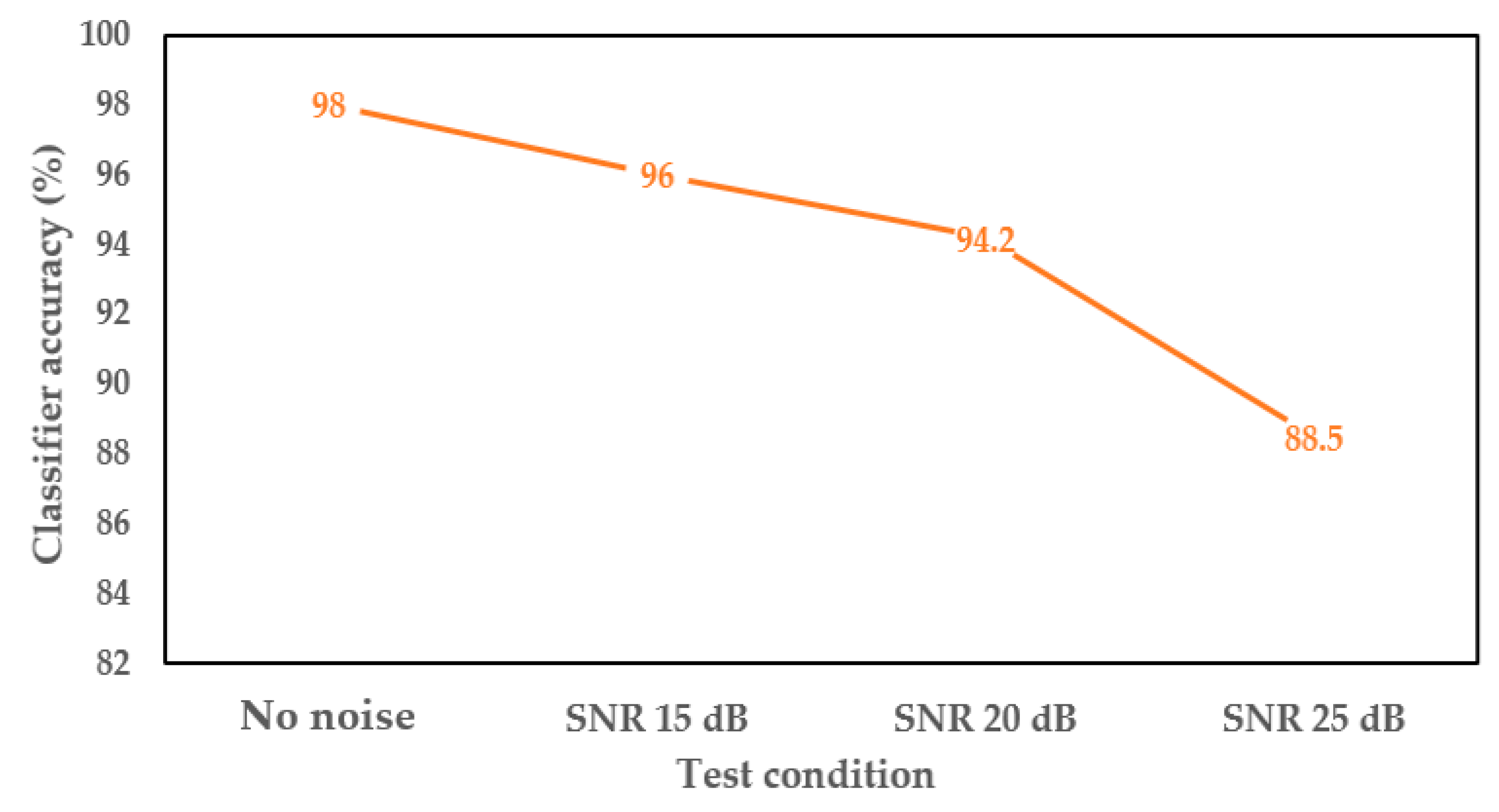
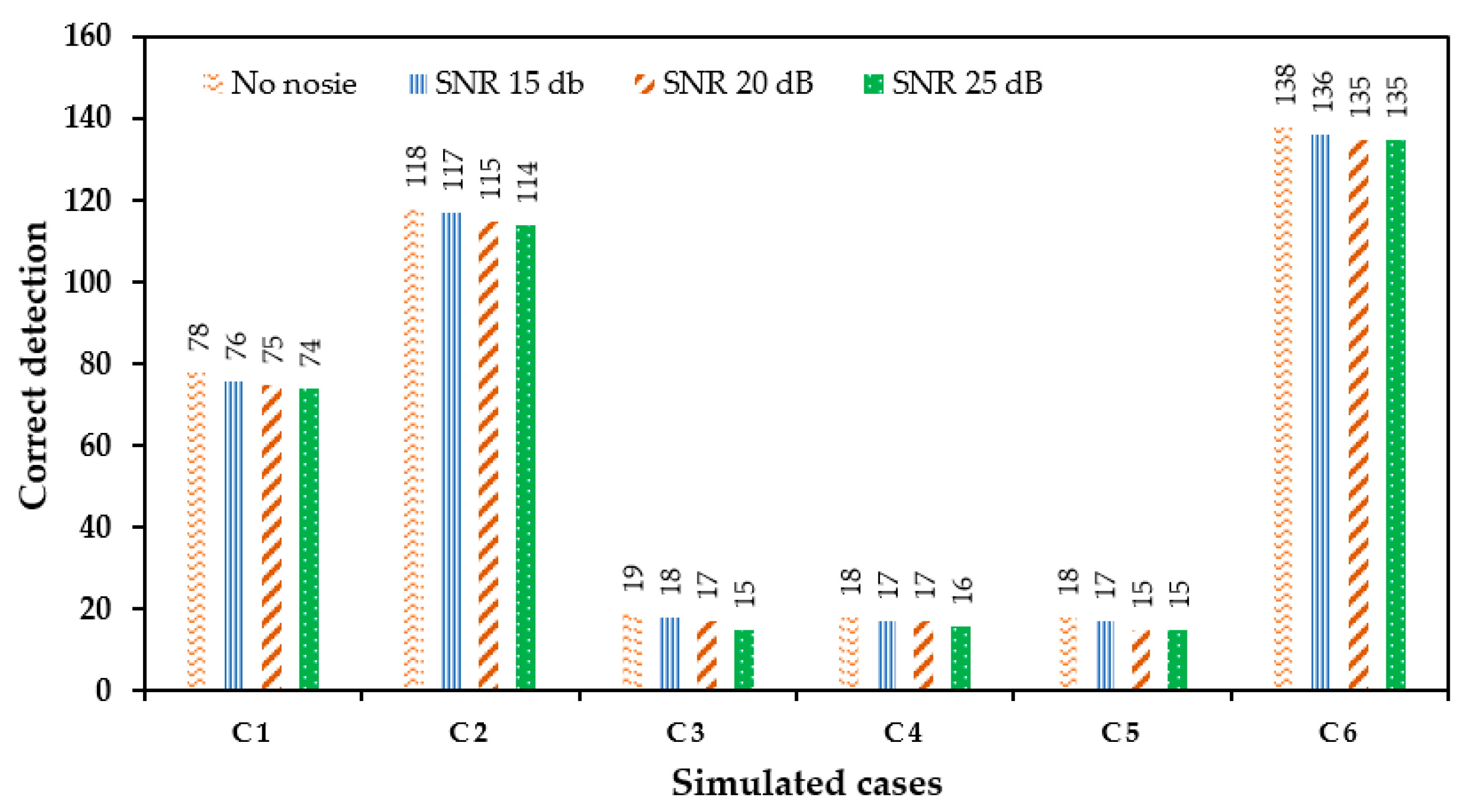
| Asset Name in PV-DPG | Specifications |
|---|---|
| Photovoltaic based distributed power generation | Module make: Sun-power Module model: SPR-415E-WHT-D Modules in series: 7 No. of parallel strings: 86 parallel strings PV-DPG power rating: 250 kW The reference voltage: 480 V DC Inverter nominal frequency: 60 Hz Voltage integral and proportional gain ki: 400, kp: 2 Current integral and proportional gains ki: 20 and kp: 3 Frequency of the PWM carrier: 33 × 60 Hz |
| Electric power grid | Rating: 120 kV, and 2500 MVA |
| Transformer | Voltage level: 120 kV/25 kV, Rating: 47 MVA for , 25 kV/0.48 kV for Resistance: = 0.025 Reactance: = 0.75 |
| Transmission line | Resistance: R = 3.75 × 10−4 Inductance: L = 9.935 × 10−5 H Capacitance: C = 0.8 F Rating: = 250 kW, = 2 MW, = 30 MW + 2 MVar Line voltage: 25 kV Length of the line: Line-1 is 14 km and Line-2 is 8 km |
| Label | Case | Case Description | Number of Tests |
|---|---|---|---|
| C 1 | Islanding | Different loads that match with DPG | 80 |
| C 2 | Islanding | Different loads that are larger/lesser than the DPG | 120 |
| C 3 | Non-islanding | Switching the electric motor | 20 |
| C 4 | Non-islanding | Capacitive switching | 20 |
| C 5 | Non-islanding | Changing the loads | 20 |
| C 6 | Non-islanding | Fault events | 140 |
| Label | Parameter | Notation | Brief Description |
|---|---|---|---|
| Signal 1 | VPCC | The PCC voltage | - the voltage at the point of common coupling is considered as a sensitive parameter for feature extraction |
| Signal 2 | fPCC | The PCC frequency | - the frequency at the point of common coupling is considered as a sensitive parameter for feature extraction |
| Signal 3 | Change in frequency | - change in frequency is considered as a sensitive parameter for feature extraction | |
| Signal 4 | Change in voltage | - change in voltage is considered as a sensitive parameter for feature extraction | |
| Signal 5 | Change in Vd | - change in Vd component is considered as a sensitive parameter for feature extraction | |
| Signal 6 | Change in Vq | - change in Vq component is considered as a sensitive parameter for feature extraction | |
| Signal 7 | VDC | The DC link voltage at the VSC | - the DC link voltage at voltage source inverter is considered as a sensitive parameter for feature extraction |
| Features | Description of Equation |
|---|---|
| Parameters | Value/Function |
|---|---|
| Hidden neurons | 40 |
| Amount of neurons output | 2 |
| Input neurons | 7 |
| Adopted learning mechanism | conjugate gradient function |
| Hidden transfer function | tansig |
| Output transfer function | Pure-linear |
© 2020 by the authors. Licensee MDPI, Basel, Switzerland. This article is an open access article distributed under the terms and conditions of the Creative Commons Attribution (CC BY) license (http://creativecommons.org/licenses/by/4.0/).
Share and Cite
Kumar, S.A.; Subathra, M.S.P.; Kumar, N.M.; Malvoni, M.; Sairamya, N.J.; George, S.T.; Suviseshamuthu, E.S.; Chopra, S.S. A Novel Islanding Detection Technique for a Resilient Photovoltaic-Based Distributed Power Generation System Using a Tunable-Q Wavelet Transform and an Artificial Neural Network. Energies 2020, 13, 4238. https://doi.org/10.3390/en13164238
Kumar SA, Subathra MSP, Kumar NM, Malvoni M, Sairamya NJ, George ST, Suviseshamuthu ES, Chopra SS. A Novel Islanding Detection Technique for a Resilient Photovoltaic-Based Distributed Power Generation System Using a Tunable-Q Wavelet Transform and an Artificial Neural Network. Energies. 2020; 13(16):4238. https://doi.org/10.3390/en13164238
Chicago/Turabian StyleKumar, S. Ananda, M. S. P. Subathra, Nallapaneni Manoj Kumar, Maria Malvoni, N. J. Sairamya, S. Thomas George, Easter S. Suviseshamuthu, and Shauhrat S. Chopra. 2020. "A Novel Islanding Detection Technique for a Resilient Photovoltaic-Based Distributed Power Generation System Using a Tunable-Q Wavelet Transform and an Artificial Neural Network" Energies 13, no. 16: 4238. https://doi.org/10.3390/en13164238
APA StyleKumar, S. A., Subathra, M. S. P., Kumar, N. M., Malvoni, M., Sairamya, N. J., George, S. T., Suviseshamuthu, E. S., & Chopra, S. S. (2020). A Novel Islanding Detection Technique for a Resilient Photovoltaic-Based Distributed Power Generation System Using a Tunable-Q Wavelet Transform and an Artificial Neural Network. Energies, 13(16), 4238. https://doi.org/10.3390/en13164238









